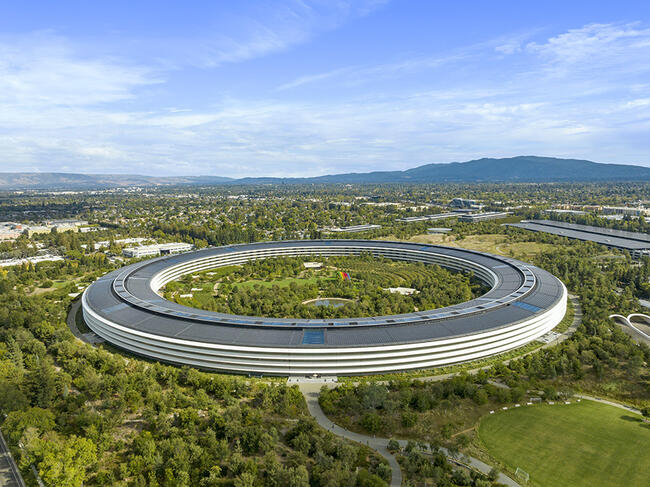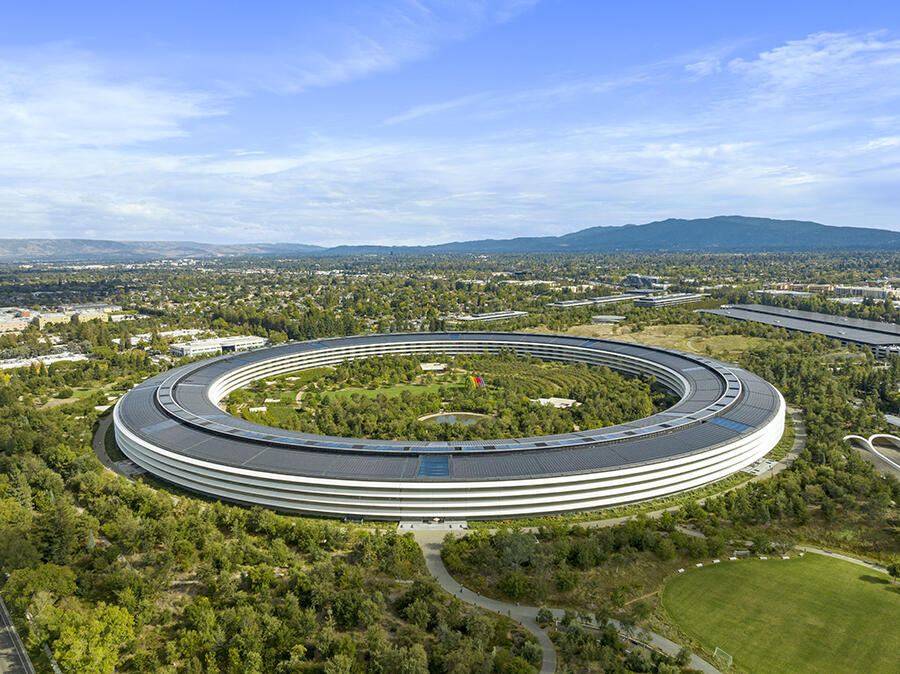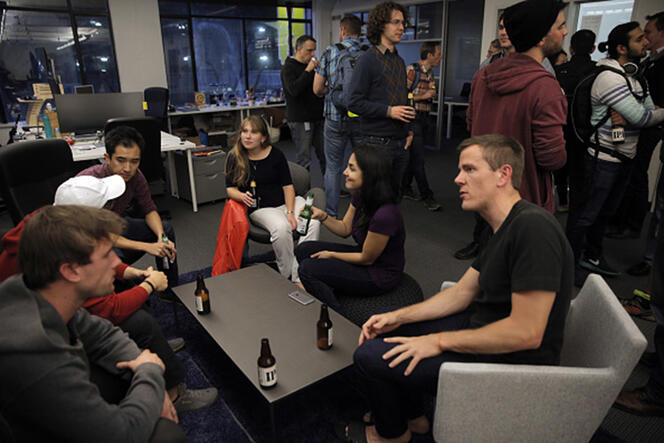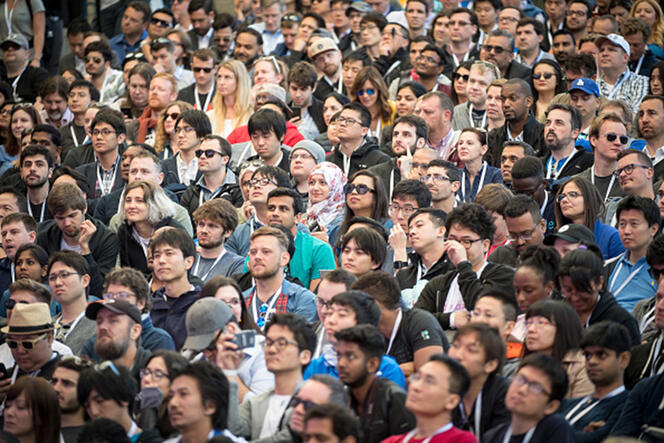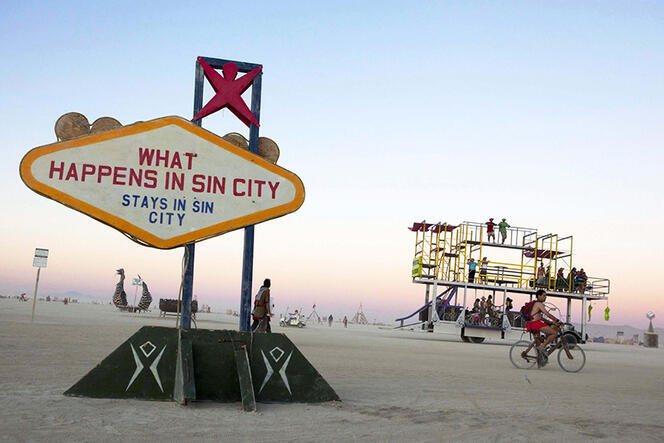You are here
Silicon Valley, a sociologist in the tech kingdom

Why did you decide to work in Silicon Valley?
Olivier Alexandre1: Originally, I am a sociologist of culture. I had just finished my dissertation on French cinema when Netflix arrived in France in 2014, prompting great concern in the field. So I decided to devote my postdoctoral work to studying the company, and I was invited by Stanford University, in the heart of Silicon Valley. I did not know anything about the world of tech, and I quickly realised the difficulties I would have to face in looking into this streaming service. While it seemed easily accessible on the surface – in Silicon Valley everyone wears T-shirts, sneakers, and hooded sweatshirts, a far cry from the codes in European centres of power – I quickly understood it would be impossible to open the black box of companies and technologies. My work on Netflix ended in failure, but it made me realise that there was no overall sociological research on Silicon Valley itself, its actors and rules of operation. So I embarked on this entirely uncertain and bold undertaking, not knowing much about the world of new technologies, or about the history of the place.
How did your study proceed?
O. A.: My study lasted for seven years in all, two of which were on site. I made over 2,000 observations and conducted nearly 150 interviews, trying to adhere as best as I could to the demographics of the population and organisations. Conducting a long-term endeavour when working on Silicon Valley is a challenge in and of itself, for everything moves so quickly there. When I began, Yahoo! was one of the tech giants, but today it is the butt of jokes in the field. As a researcher, there was a high risk of focusing on the latest fashion and producing knowledge that would quickly prove obsolete. I also learned to be suspicious of storytelling. Silicon Valley functions by telling stories, which should not be taken at face value. It has adopted the 90/10 system – 90% failures for 10% of successes – a ratio that applies to both start-ups and individual projects developed in major tech companies. Telling stories allows actors in tech – whether companies or individuals – to be somewhat in command of the highly shifting world of innovation, where failure is the rule and uncertainty ubiquitous. It means controlling one’s image, as well as selling and exposing oneself to evaluation, within a highly competitive world.
How would you describe Silicon Valley as a place?
O. A.: It is very difficult to sketch out its outlines, for we are not dealing with an administrative entity as such. As a result, there is very little aggregated data for this area. In broad strokes, Silicon Valley is three million people working directly or indirectly in tech, out of a total population of nine million inhabitants. It has no equivalent elsewhere in the world, and produces a highly peculiar society of people living through and for technology. This area measuring 200 km2 – twice the size of the city of Paris – has an exceptional concentration of companies. While there is constant talk of GAFAM2, Silicon Valley actually includes around 15,000 enterprises, half of which are small organisations with less than ten employees. Google, Netflix, Amazon, etc. help create the myth of Silicon Valley, but these giants are the trees that hide the forest. A few star entrepreneurs such as Elon Musk garner media attention, yet there are some 35,000 heads of companies trying to navigate as best they can.
It should also be noted that the geography of Silicon Valley largely exceeds the borders of California. It has mostly become a decision-making and design centre, with no factories, and teams working remotely, in addition to partnerships and outsourcing contracts spanning the American continent, along with Europe, China, India, and Africa, among others. One example among many is the city of Nairobi, Kenya, which in recent years has turned into an important outsourcing platform for a number of Silicon Valley companies such as OpenAI, which develops ChatGPT. This seemingly benevolent and cheerful place, which we readily imagine in the guise of a twenty-something geek in a T-shirt and sneakers, has multiple faces. When you look deeper into it, it’s just dizzying!
You mention the twenty-something geek. Is this the dominant profile in the Silicon Valley ecosystem?
O. A.: The stereotype of the twenty-something graduate from an American university corresponds fairly accurately to the sociology of companies that end up listed on the stock exchange. But this represents a very small minority. Silicon Valley consists of 50% people from other countries. The impact of diasporas, especially Indian and Chinese, is enormous. The population is also older than one would expect. For entrepreneurs the average age is around 45 years old, and not all of them went to renowned universities. Differences in income are also considerable: there is a broad spectrum between the 3,000 individuals at the top of the pyramid (directors of large companies, key executives and managers, leading investors, star engineers, etc.) and ‘unskilled workers’ in service positions (reception, security, cleaning, institutional catering, etc.), who live in precarious conditions.

You recount in the book that your Silicon Valley experience was very similar to that of all those who come to try their luck.
O. A.: My way of life was fairly typical of Silicon Valley, starting with the material conditions. Rent is extortionate, and like numerous newcomers I had to move a number of times over a two-year period. The postdoctoral fellowship I had was comfortable by French standards, but not by those of Silicon Valley! My days were no exception to local criteria. I woke up at 6:30 and went to bed at midnight. Not knowing anyone on site, I spent all my time on the computer gathering data, and contacting people online, with a response rate that could be qualified as catastrophic: under 10%, with only half of those leading to interviews. At night, between 6:00 and 8:00 p.m., I attended ‘meet-ups’ and pitch competitions, in which people presented their projects in a few minutes in the hopes of being singled out or establishing useful contacts.
That’s the paradox of the place: seen from the outside, one might think it’s open and friendly, and everything is possible. On the inside, things are much colder and utilitarian, there are codes that must be understood, without which the chances of climbing to the top are slim. These barriers ultimately weigh on the morale of entrepreneurs. After the initial excitement – for those who come here have the impression they are reaching for their dream – the ensuing months are marked by discouragement surrounding the major obstacles that must be overcome. I also experienced that. At first my study was not progressing, but then I began to realise how to proceed.
What is the best method for approaching this place?
O. A.: First, you must understand how sociability works in Silicon Valley. You cannot do anything without a network, whether it be from the university you attended, the companies you worked for, or leisure activities such as yoga, kitesurfing, cycling, climbing, the Burning Man festival, etc. The diaspora you belong to is a key point of entry. Silicon Valley is a land of migrants – you are not born there, you come there – and the network of expatriates is a source of contacts, support, information, and go-betweens for all new arrivals. Those newcomers, including the French, are not always conscious of that: avoiding one’s compatriots proves counterproductive, as sociabilities are based on communities. The French community will therefore be invaluable for those newly-arrived from France.
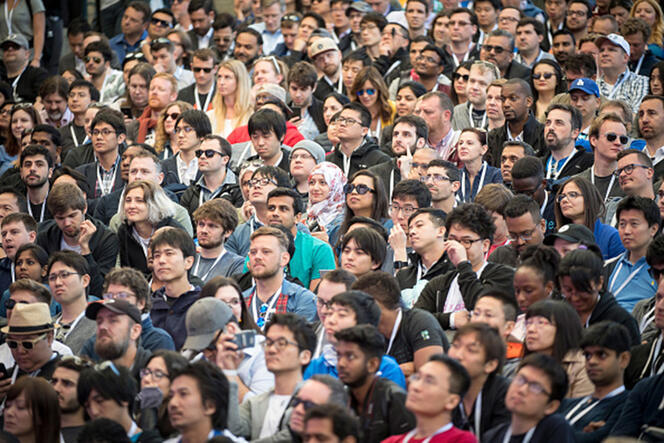
There is an art to developing one’s social network that is specific to Silicon Valley. The watchword is ‘an introduction’. Networks there are always three-pronged. If A wants to meet C, they must go through B, who knows both A and C. It is pointless, or at least very uncertain, to directly address C. B plays the role of interface and guarantor. In doing so, B becomes creditor to A, and perhaps eventually to C. In this world entirely organised around innovation, it is impossible to know beforehand what will work, especially with new faces arriving all the time. The only thing you can do is try to suss out people. The ‘introduction’ serves as a filter in this respect. The downside is that when you live in Silicon Valley, it is very difficult to have interactions without some level of interest being involved, even when it comes to leisure. It is a market of opportunities, in which everyone can consider others as a means and a commodity.
Are there other rules specific to this world?
O. A.: There are basic rules that you must be familiar with, practices that seem trivial but that can disqualify you if you do not comply with them: attending meetings on time, always basing yourself on data, being skilled at storytelling regarding your entrepreneurial project, responding to emails the same day, and writing clear and concise messages, for people there have little time, and are often solicited. It is especially important to avoid the touch of humour and ‘little extras’ that French people are so keen on. These protocols aim to disseminate information as efficiently as possible, and help select between right and wrong data, valuable and worthless projects. The take-home message in Silicon Valley is that an idea in itself is worth nothing, what matters is putting it into practice – what problem does it address, what market does it target, with what technical solution, and most importantly with what team? It’s a very concrete approach that Europeans sometimes struggle to adopt.
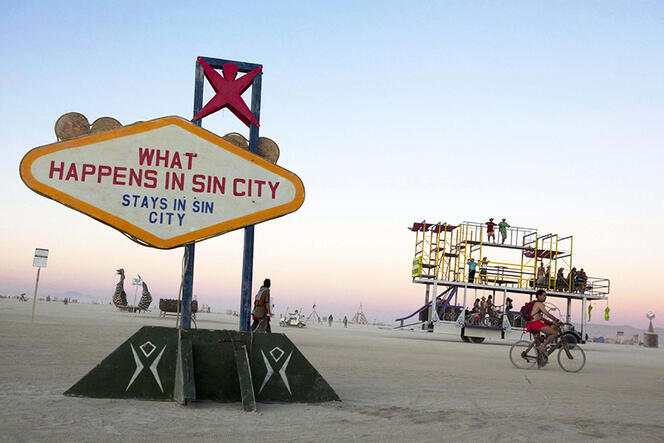
What role does the Burning Man festival play in this ecosystem?
O. A.: For those who do not know it, the Burning Man festival was born on a San Francisco beach in 1986. It is strongly associated with the counterculture, involving more or less libertarian artists, performers, and technology experts. When it was banned from California, it moved to the Nevada desert, where it has continued to expand, reaching 80,000 participants in recent years. A quarter of them come from Silicon Valley, especially major companies such as Facebook, Google, etc.
Burning Man is quite fascinating, there is an outlandish side to it, with people walking around naked or taking drugs over the entire event, etc. The ‘Man’, a monumental wooden structure built in the middle of this giant campsite, is set on fire at the end of the festival. People from Silicon Valley emphasise the ‘experience’ they go through there, having to survive for a week in a hostile environment – a desert where temperatures drop below zero at night and exceed 40 °C in the daytime. It’s all supposed to stimulate creativity, to help deconstruct your identity and find ‘your’ project. For example, legend has it that Philip Rosedale got the idea for Second Life while there.
You mentioned the libertarianism of the Burning Man festival. Silicon Valley itself seems to be a curious mix of hypercapitalist culture and very offbeat ideologies.
O. A.: Silicon Valley is also innovative on the ideological level, with major trends influencing it such as libertarianism (freedom of initiative, of expression, of technology, etc.) – which sees the government as a threat whenever it challenges these liberties – in addition to transhumanism, technological singularity, and longtermism. The latter school of thought reflects on how to preserve human potential over the very long term, primarily with regard to technological progress. The idea is to anticipate what will happen within hundreds of years, with a view to determining how to save and optimise potential future innovations during that period of time. These ideologies are disseminated via online publications, as well as meeting groups at the intersection between the business world, universities, and foundations.
What are the major challenges that Silicon Valley will have to face in the decades ahead?
O. A.: Politically, Silicon Valley is a paradox. The most advanced social progressivism – gay marriage, right to abortion, surrogate mothers, freezing the oocytes of employees – coexists with unbridled capitalism, which turns its back on the welfare state while using aggressive lobbying strategies. It presents itself as meritocratic, but it functions like an aristocracy built around Stanford and a few thousand individuals who monopolise the leading roles. It tries to come across as an industry serving society’s best interests, yet it is the decision-making centre for a production chain built on unequal exchange: the exploitation of rare-earth metals, the manufacture of components by Chinese subcontractors, the moderation of content offshored to countries with social and environmental standards well below Western ones, so-called ‘immaterial’ solutions that are actually based on a clearly polluting industry, rising inequalities under the cover of interconnectivity, etc. These are so many of the contradictions that the tech world will have to face and assume in the 21st century.♦
Further reading
Tech. When Silicon Valley Remakes the World(link is external), Olivier Alexandre, University of California Press, 2025, 344 p.


